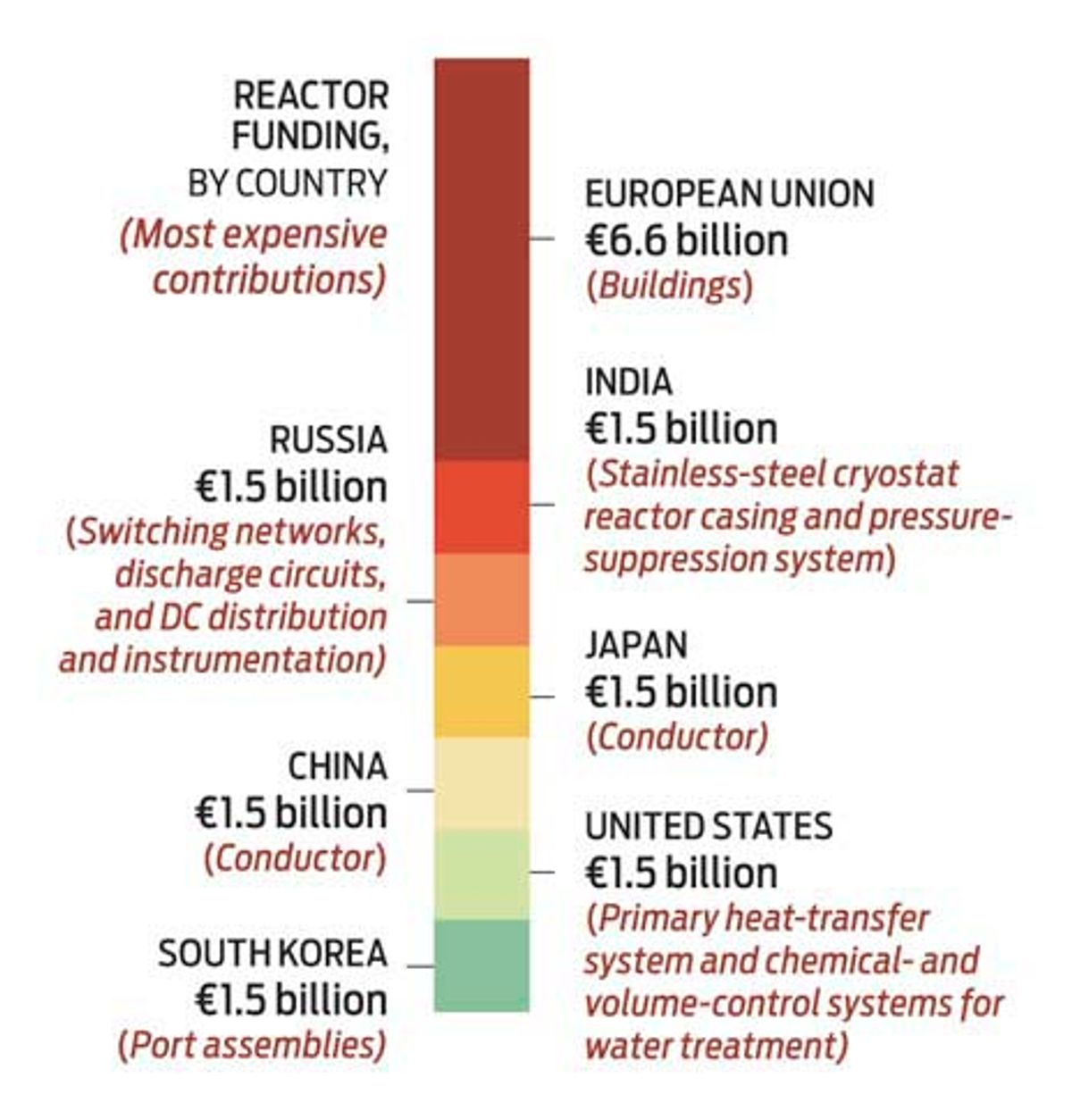The world's biggest bet on fusion, the ITER nuclear fusion reactor, may finally be getting over its money troubles. Delegates from ITER's seven international partners agreed in July on a new budget for the construction of the experimental reactor. They estimate that the total costs of the machine and its facilities, slated for completion at Cadarache in southern France by 2019, will tally about 16 billion, or US $21 billion. When the partners signed the original ITER agreement in 2006, they estimated the construction costs—in 2010 currency—at just 5.2 billion (US $6.9 billion). But tweaks to the original reactor design, coupled with rising prices for building materials, have inflated budget projections, inviting some criticism from scientists who say the money could be better spent on nearer-term green-energy R&D. Under the new budget agreement, the European Union will contribute no more than 6.6 billion (US $8.7 billion) to construction costs. Each of the six other member countries will be responsible for delivering about 1.5 billion worth of hardware—conductors, coils, shields, power supplies—instead of cash. Now that ITER's budget issues are settled, construction crews can start putting pickaxes in dirt.
Fusion Is Not Free
Who's paying for ITER's big appetite?
31 Aug 2010
1 min read


